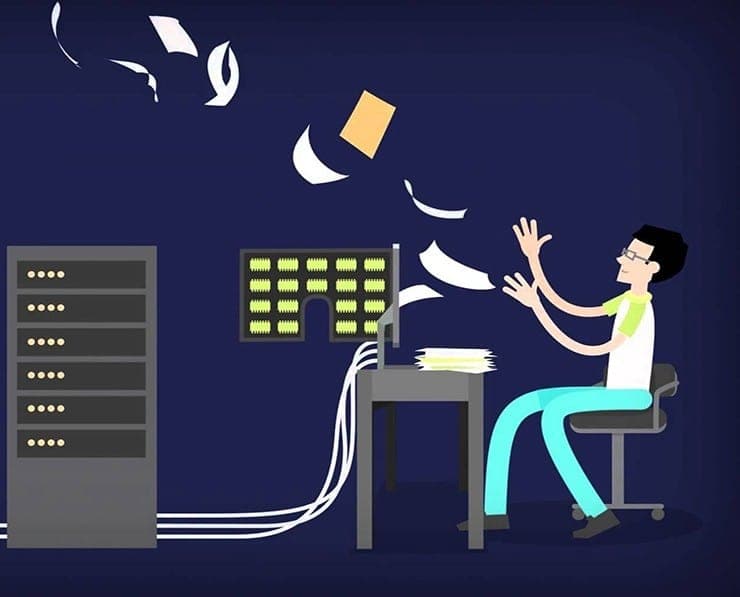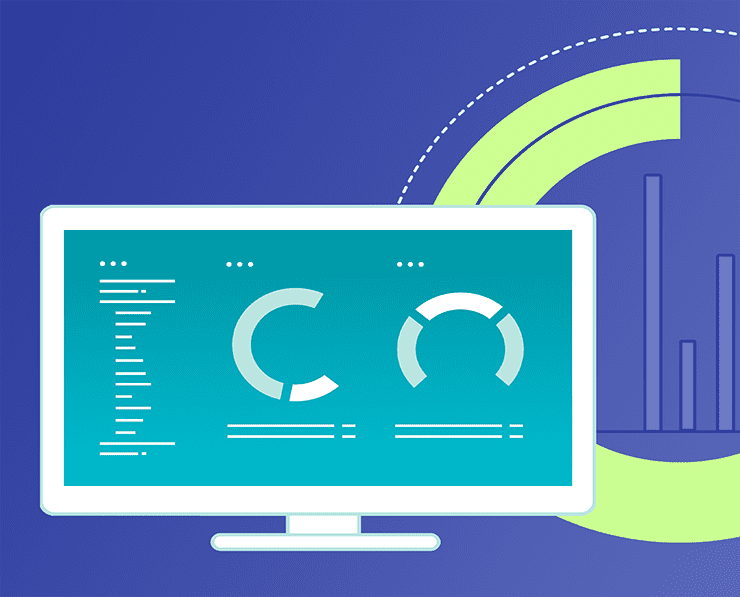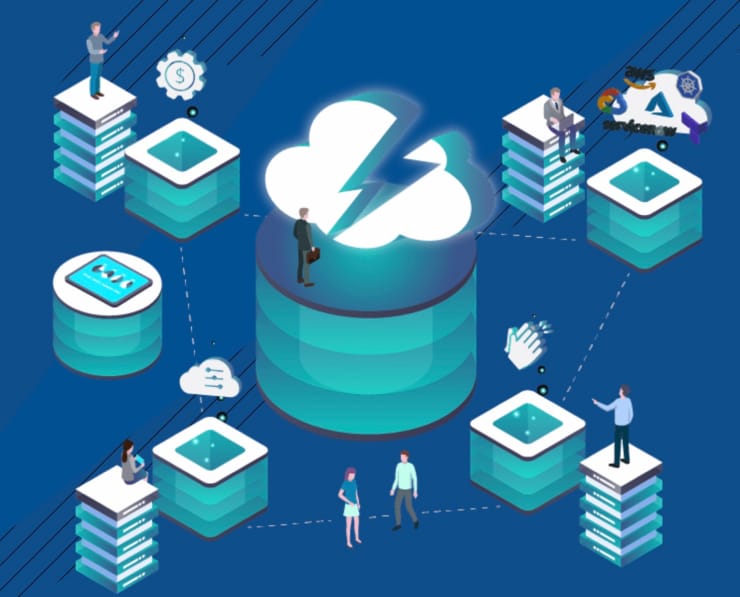Student Feedback
1z0-082: Oracle Database Administration I Certification Video Training Course Outline
Introduction and foundations
Download & installing + Basi...
Database Startup,shutdown and co...
Helpful queries to explore Oracl...
Managing Database Instance
Creating PDBs
Configuring the Oracle Network E...
Administering User Security
Creating and managing tablespaces
Managing Storage Space
Managing UNDO Data
Moving Data
Backup and Recovery Concepts
Introduction and foundations
1z0-082: Oracle Database Administration I Certification Video Training Course Info
Oracle DBA 1Z0-082 Online Course – Exam Ready Training
Prepare for and Successfully Clear the Oracle Database Administration 1Z0-082 Exam with Authentic Questions and Answers
Description
Welcome to the Oracle Database Administration I (1Z0-082) course designed for professionals seeking to strengthen their skills in Oracle Database 19c. This course provides comprehensive coverage of the theoretical knowledge and practical skills necessary to configure, manage, and maintain Oracle Databases efficiently. You will gain deep insights into Oracle architecture, instance management, storage, SQL operations, user administration, and performance monitoring. The course is structured to prepare you for the 1Z0-082 certification exam while equipping you with hands-on expertise to handle real-world database administration tasks.
What You Will Learn From This Course
• Understand Oracle Database architecture, components, and their interactions
• Configure and manage Oracle Database instances for optimal performance
• Monitor and maintain memory structures, background processes, and system performance
• Manage tablespaces, data files, and storage effectively
• Implement user authentication, roles, privileges, and profiles securely
• Perform data movement and manipulation using SQLLoader, Data Pump, and external tables
• Utilize Oracle administration tools including DBCA, SQL Developer, SQLPlus, and Enterprise Manager
• Configure Oracle Net Services and network communication between database instances
• Manage schema objects, temporary tables, sequences, synonyms, and indexes
• Apply space management techniques such as shrinking segments, deferring segment creation, and compression
• Use SQL operators, functions, joins, subqueries, and set operations to retrieve and manipulate data
• Handle time zones, intervals, and data across different environments efficiently
• Apply best practices for database performance tuning, monitoring, and troubleshooting
Learning Objectives
The course is designed to provide participants with the knowledge and skills to:
• Understand the core architecture and structure of Oracle Database 19c
• Configure database instances, memory structures, and processes effectively
• Administer users, roles, and privileges while applying security principles
• Manage storage, tablespaces, undo segments, and database files efficiently
• Access and use Oracle administration tools for configuration, monitoring, and management
• Execute data manipulation, retrieval, and reporting tasks using SQL and PL/SQL
• Implement backup, recovery, and space management strategies to ensure database reliability
• Troubleshoot common issues using logs, alerts, and diagnostic tools
• Prepare effectively for the Oracle Database Administration I (1Z0-082) certification exam
Target Audience
This course is ideal for:
• Aspiring Oracle Database Administrators seeking OCA certification on Oracle Database 19c
• Current database administrators looking to upgrade skills across Oracle Database 12c, 18c, and 19c
• IT professionals who want hands-on experience in Oracle Database configuration, management, and administration
• Database enthusiasts aiming to deepen their understanding of database structures, SQL operations, and Oracle administration tools
• Professionals responsible for maintaining, tuning, and troubleshooting Oracle Databases in enterprise environments
Requirements
To successfully complete this course and gain the most benefit, participants should have:
• Basic knowledge of databases and SQL concepts
• Familiarity with computer operating systems and file systems
• Understanding of networking fundamentals and client-server architectures
• Awareness of general IT concepts including storage, memory, and processes
Prerequisites
Participants are expected to have:
• Basic understanding of SQL queries, tables, and data types
• Familiarity with relational database concepts such as primary keys, foreign keys, and normalization
• Some experience with operating systems like Linux, UNIX, or Windows
• An interest in Oracle Database administration and certification
Understanding Oracle Database Architecture
Oracle Database architecture is fundamental to understanding how the system stores, retrieves, and manages data. The architecture consists of logical and physical components. Logical components include tablespaces, segments, extents, and blocks, while physical components consist of data files, control files, and redo log files. Oracle uses background processes and memory structures to handle user requests, perform transactions, and maintain database integrity. Understanding this architecture allows administrators to optimize performance, troubleshoot issues, and ensure data consistency.
Understanding Oracle Database Instance Configurations
An Oracle Database instance is composed of memory structures and background processes that manage database files and operations. Key memory structures include the System Global Area (SGA) and Program Global Area (PGA). The SGA contains shared information such as database buffers and cached SQL statements, while the PGA is used for session-specific computations and sorting. Background processes handle tasks like writing redo logs, managing data buffers, and performing recovery operations. Configuring instances correctly ensures efficient resource usage and high database performance.
Understanding Oracle Database Memory and Process Structures
Oracle memory structures include the SGA, PGA, and shared pool. Administrators must understand how to allocate memory for optimal performance and monitor usage using dynamic performance views. Background processes such as DBWR, LGWR, SMON, and PMON perform critical functions including writing modified data to disk, logging transactions, and monitoring instance health. Understanding these processes is essential for troubleshooting performance issues and ensuring database reliability.
Understanding Logical and Physical Database Structures
Logical structures define how data is organized, while physical structures define how data is stored. Tablespaces are logical containers for database objects and are composed of one or more data files. Segments, extents, and blocks define how space is allocated and managed within tablespaces. Control files, redo log files, and archived logs form the backbone of physical database management. Proper knowledge of these structures is vital for space management, backup, recovery, and performance optimization.
Managing Database Instances
Database administrators need to start, stop, and maintain database instances efficiently. Using SQL*Plus, Enterprise Manager, or DBCA, administrators can start up instances in different modes including NOMOUNT, MOUNT, and OPEN. Shutting down instances can be done gracefully or immediately depending on the situation. Regular maintenance ensures availability, reduces downtime, and prepares the system for consistent performance.
Using Data Dictionary and Dynamic Performance Views
Data dictionary views provide metadata about database objects, users, privileges, and performance metrics. Dynamic performance views allow real-time monitoring of memory usage, sessions, locks, and resource allocation. Proficiency in querying these views enables administrators to optimize queries, monitor system health, and identify performance bottlenecks.
Using Automatic Diagnostic Repository (ADR)
ADR stores diagnostic data including trace files, alert logs, and incident reports. Administrators can use ADR to investigate errors, track issues, and implement corrective measures. Effective use of ADR improves troubleshooting efficiency and reduces system downtime.
Managing Initialization Parameter Files
Initialization parameter files (PFILE or SPFILE) control instance behavior and resource allocation. Understanding parameters such as memory allocation, process limits, and database identification is critical for performance tuning and configuration management. Administrators can modify parameters to optimize instance performance based on workload requirements.
Managing Users, Roles, and Privileges
User management involves creating accounts, assigning roles, defining privileges, and implementing security policies. Applying the principle of least privilege ensures that users have only the access necessary to perform their tasks. Profiles can be created to enforce password policies, session limits, and resource allocation. Proper user administration strengthens database security and compliance.
Administering User Authentication Methods
Oracle provides multiple authentication methods including password authentication, external authentication, and enterprise authentication services. Selecting and configuring the appropriate method enhances security and integrates the database with organizational policies. Administrators must regularly audit authentication methods to maintain compliance and mitigate risks.
Course Modules / Sections
The Oracle Database Administration I (1Z0-082) course is structured into well-defined modules that cover all essential aspects of Oracle Database 19c administration. Each module is designed to build upon the previous one, ensuring a comprehensive understanding of both theory and practical application.
Module 1: Oracle Database Architecture and Instances
This module introduces the architecture of Oracle Database 19c, including memory structures, processes, and physical and logical components. Learners will gain an understanding of tablespaces, data files, control files, redo logs, and background processes. The module emphasizes how each component interacts to maintain data integrity and system performance. Practical exercises include examining database memory allocation, monitoring processes, and configuring instance parameters.
Module 2: User Management and Security
This module focuses on creating and managing database users, assigning roles, privileges, and profiles, and implementing authentication methods. Students will learn to apply the principle of least privilege to ensure security compliance. Tasks include creating users, defining password policies, configuring authentication methods, and auditing user access. Real-world scenarios demonstrate how to secure sensitive data and prevent unauthorized access.
Module 3: Storage Management and Tablespaces
This module covers logical and physical storage management, including tablespaces, data files, segments, extents, and blocks. Learners will explore how Oracle allocates space, manages undo tablespaces, and uses automatic segment management. Techniques for shrinking segments, deferring segment creation, and implementing compression are included. Hands-on exercises involve creating, altering, and dropping tablespaces, managing online data files, and optimizing storage usage.
Module 4: Data Movement and SQL Tools
This module focuses on moving and manipulating data using Oracle tools such as SQLLoader, Data Pump, and External Tables. Students will learn how to export and import data efficiently, load large datasets, and handle data transformations. The module also introduces Oracle administration tools including DBCA, SQL Developer, SQLPlus, Enterprise Manager Cloud Control, and Enterprise Manager Database Express, providing hands-on experience in database configuration and management.
Module 5: Oracle Net Services and Connectivity
This module teaches students how to configure Oracle Net Services for client-server communication. Topics include configuring listeners, establishing connections between database instances, and managing naming methods. Students will learn the difference between dedicated and shared server configurations and gain practical skills in troubleshooting connectivity issues.
Module 6: SQL Operations and Data Retrieval
This module covers advanced SQL operations, including single-row and multiple-row functions, joins, subqueries, set operators, and data sorting. Students will learn how to write optimized queries for retrieving and manipulating data efficiently. Practical exercises include combining multiple functions, using conditional expressions, and working with conversion functions to manage data types.
Module 7: Backup, Recovery, and Diagnostic Tools
This module introduces the Automatic Diagnostic Repository (ADR), alert logs, trace files, and other diagnostic tools. Students will learn techniques for monitoring database health, troubleshooting errors, and performing recovery operations. Emphasis is placed on proactive maintenance to prevent system downtime.
Module 8: Transaction Management and Undo Data
This module covers transaction control, managing undo segments, configuring undo retention, and understanding the relationship between undo and redo data. Students will gain practical experience in storing and retrieving undo information, ensuring data consistency, and resolving conflicts during concurrent operations.
Module 9: Advanced Database Objects and Schema Management
This module focuses on managing sequences, synonyms, indexes, temporary tables, constraints, and other schema objects. Learners will gain skills in optimizing storage, maintaining schema integrity, and using advanced Oracle features to support complex applications.
Module 10: Performance Monitoring and Optimization
This module teaches methods for monitoring database performance, identifying bottlenecks, and tuning system parameters. Students will learn to use dynamic performance views, analyze memory usage, monitor sessions, and implement best practices to maintain high availability and responsiveness.
Key Topics Covered
The Oracle Database Administration I (1Z0-082) course covers a wide range of topics essential for both exam preparation and practical administration skills.
Oracle Database Architecture
Understanding the components and layers of Oracle Database, memory structures, background processes, logical and physical database elements, and server architecture.
Instance Management
Configuring and managing database instances, starting up and shutting down instances in various modes, and monitoring instance health using dynamic performance views.
User Administration and Security
Creating users, assigning roles and privileges, implementing password policies, managing authentication methods, and applying least privilege principles.
Storage and Tablespace Management
Managing tablespaces, data files, undo tablespaces, shrinking segments, deferring segment creation, using compression, and implementing Oracle Managed Files.
Data Movement and Loading
Using Oracle Data Pump, SQL*Loader, and External Tables to efficiently move data, handle large datasets, and perform data transformation.
Oracle Tools for Administration
Practical use of DBCA, SQL Developer, SQL*Plus, Enterprise Manager Cloud Control, and Enterprise Manager Database Express for configuration, monitoring, and management tasks.
Oracle Net Services
Configuring listeners, managing client connections, troubleshooting connectivity issues, and understanding dedicated vs. shared server configurations.
SQL Querying and Data Retrieval
Using SELECT statements, joins, subqueries, set operations, conversion functions, conditional expressions, and aggregation to retrieve and manipulate data effectively.
Transaction and Undo Management
Controlling transactions, managing undo data, configuring undo retention, and understanding the interplay between undo and redo logs.
Advanced Schema Objects
Managing indexes, sequences, synonyms, temporary tables, constraints, and other schema objects for optimal performance and integrity.
Performance Monitoring
Monitoring memory and process usage, analyzing dynamic performance views, identifying bottlenecks, and applying performance tuning techniques.
Diagnostics and Troubleshooting
Using ADR, alert logs, trace files, and other diagnostic tools to troubleshoot issues, prevent downtime, and maintain database health.
Teaching Methodology
The course uses a combination of theoretical explanations, practical exercises, and real-world scenarios to ensure comprehensive learning.
Lectures and Concept Discussions
Lectures provide detailed explanations of Oracle Database architecture, instance management, storage, and administration concepts. Concepts are broken down into understandable segments with examples to enhance comprehension.
Hands-On Labs and Exercises
Students will perform hands-on exercises using Oracle Database 19c to reinforce learning. Labs include creating tablespaces, managing users, configuring instances, writing SQL queries, performing data exports/imports, and using administration tools.
Demonstrations
Instructor-led demonstrations show practical implementations of key concepts, including using Oracle Net Services, monitoring performance, and managing storage and schema objects. These demonstrations provide step-by-step guidance for real-world application.
Case Studies
Real-world scenarios and case studies allow learners to apply concepts in practical situations, such as troubleshooting performance issues, optimizing storage, and configuring authentication methods.
Self-Paced Practice
Students are encouraged to perform exercises independently to reinforce concepts and develop problem-solving skills. Practice includes using SQL commands, performing instance management tasks, and configuring Oracle tools.
Interactive Sessions
Discussions and Q&A sessions allow learners to clarify doubts, explore alternative solutions, and gain deeper insights into Oracle Database administration practices.
Assessment & Evaluation
Assessment is designed to ensure that learners have mastered both theoretical knowledge and practical skills required for Oracle Database Administration I (1Z0-082) certification.
Quizzes and Practice Tests
Regular quizzes assess understanding of core concepts such as architecture, memory management, storage, and user administration. Practice tests simulate exam conditions to help learners prepare effectively for the 1Z0-082 certification exam.
Hands-On Assignments
Assignments require learners to perform practical tasks including configuring instances, creating tablespaces, managing users, executing SQL queries, and troubleshooting database issues. These tasks reinforce hands-on skills essential for real-world database administration.
Projects
Comprehensive projects allow learners to demonstrate their ability to design, configure, and manage Oracle Database instances. Projects cover data movement, performance monitoring, schema management, and security implementation.
Performance Monitoring Exercises
Students are evaluated on their ability to monitor database performance, analyze system metrics, and implement corrective actions using dynamic performance views and diagnostic tools.
Feedback and Improvement
Instructors provide detailed feedback on quizzes, assignments, and projects to help learners identify areas for improvement and strengthen their skills. Continuous assessment ensures learners progress toward mastery of Oracle Database Administration.
Certification Readiness
Evaluation methods are aligned with the requirements of the Oracle Database Administration I (1Z0-082) exam. Learners gain confidence in both exam preparation and practical application of Oracle Database administration skills.
Benefits of the Course
This Oracle Database Administration I (1Z0-082) course offers numerous benefits for professionals seeking to advance their knowledge and career in database management. By completing this course, learners will gain comprehensive skills to administer Oracle Database 19c effectively and confidently. The course ensures participants develop both theoretical knowledge and practical abilities to handle real-world scenarios.
One of the primary benefits is preparation for the Oracle Database Administration I certification exam (1Z0-082). Learners gain a structured approach to mastering core concepts such as Oracle architecture, instance management, storage configuration, user administration, SQL operations, and performance monitoring. This foundation helps candidates feel confident and well-prepared to pass the certification exam, which enhances career opportunities in database administration.
The course also equips learners with hands-on skills to manage database instances, configure tablespaces, perform data movement using Oracle tools, and implement security policies effectively. Students learn to monitor database performance, troubleshoot issues using diagnostic tools, and optimize system resources for high availability. These practical skills are essential for roles such as Oracle Database Administrator, Database Engineer, and IT Infrastructure Specialist.
Another significant benefit is exposure to a variety of Oracle tools and technologies. Learners gain experience with SQL Developer, SQL*Plus, DBCA, Enterprise Manager Cloud Control, Enterprise Manager Database Express, Oracle Net Services, and more. Understanding how to use these tools in real-world scenarios prepares participants for day-to-day administrative tasks and improves efficiency in managing large and complex databases.
This course also emphasizes best practices in security, user management, and transaction control. Learners develop the ability to create and assign roles, privileges, and profiles, and implement authentication methods to protect sensitive data. Knowledge of undo and redo management, backup strategies, and space allocation helps ensure database integrity and minimizes downtime, which is crucial for enterprise environments.
Furthermore, participants enhance their SQL skills, including data retrieval, joins, subqueries, set operations, conditional expressions, and data aggregation. These capabilities allow administrators to generate accurate reports, manipulate data efficiently, and support business decision-making processes. The combination of SQL expertise and administrative skills makes learners versatile and valuable in any organization that uses Oracle databases.
The course also provides a clear pathway to career growth. Certified Oracle Database Administrators are in high demand across industries such as finance, healthcare, technology, and government. Completing this course and obtaining the OCA certification demonstrates technical proficiency, problem-solving capabilities, and a commitment to professional development, which can lead to higher responsibilities, promotions, and salary advancement.
Finally, this course builds confidence and competence in handling advanced Oracle database features. Learners become proficient in memory and process management, database connectivity, performance tuning, schema management, and data movement strategies. These capabilities enable administrators to maintain highly available, secure, and optimized databases, which are critical for organizations that rely on Oracle technology for their operations.
Course Duration
The Oracle Database Administration I (1Z0-082) course is designed to provide comprehensive training while accommodating the pace of learners with varying levels of experience. The typical duration of the course is 6 to 8 weeks when followed in a structured manner, with approximately 3 to 5 hours of study per week. This duration ensures that learners have enough time to understand theoretical concepts, practice hands-on exercises, and complete assignments effectively.
For participants who wish to study intensively, the course can be completed in a shorter period, typically 3 to 4 weeks, with dedicated daily sessions and practical exercises. Intensive learning allows faster preparation for the certification exam and quick application of skills in professional settings. However, learners are encouraged to balance study time with hands-on practice to maximize understanding and retention.
The course is structured into multiple modules, each covering specific topics such as architecture, instance management, storage, SQL operations, user administration, Oracle tools, and performance monitoring. Each module is designed to take approximately 6 to 10 hours to complete, depending on the learner’s familiarity with the concepts. Hands-on exercises and practice assignments are integrated into each module to reinforce learning.
Self-paced learning is also supported, allowing learners to adjust the course duration based on their personal schedules. This flexibility enables working professionals and students to study at their own pace, revisit complex topics, and practice exercises until they achieve confidence in applying the concepts. The course includes practice tests and assessment exercises, which can also influence the total duration based on individual performance and readiness for the certification exam.
In addition to structured study, learners are encouraged to engage in additional practice using Oracle Database 19c environments, SQL queries, and administrative tools. This approach helps solidify practical skills and ensures participants are well-prepared for both exam scenarios and real-world database administration tasks.
Tools & Resources Required
To effectively participate in this Oracle Database Administration I (1Z0-082) course, learners will require access to specific tools and resources. These tools are essential for hands-on practice, exercises, and real-world application of concepts.
Oracle Database Software
Participants must have access to Oracle Database 19c software. This includes installation on local machines or access to a virtual lab environment provided by the course. Having the software installed allows learners to practice instance management, tablespace configuration, storage management, user administration, SQL operations, and performance monitoring exercises.
SQL Developer and SQL*Plus
Oracle SQL Developer and SQL*Plus are key tools for performing SQL operations, querying data, creating and managing schema objects, and administering databases. Learners will use these tools extensively to execute commands, practice queries, and perform administrative tasks. Familiarity with these tools enhances productivity and strengthens understanding of Oracle SQL operations.
Oracle Enterprise Manager Tools
Access to Oracle Enterprise Manager Cloud Control and Enterprise Manager Database Express is required for monitoring database performance, configuring instances, and managing storage and schema objects. These tools provide real-time insights into database health and performance, allowing learners to practice troubleshooting and optimization techniques.
Oracle Net Services
Learners must have access to Oracle Net Services tools and configurations to practice network connectivity between database instances, listener configuration, and client-server communication. Understanding these tools is critical for configuring reliable and secure database connections in enterprise environments.
Practice Scripts and Presentations
Course-provided presentations, scripts, and exercises are essential resources for structured learning. These materials guide learners through each module, provide examples of practical scenarios, and enable hands-on practice of database administration tasks. Scripts for SQL commands, instance configuration, and storage management allow learners to apply concepts immediately in practice environments.
System Requirements
Participants should have a computer system that meets the minimum requirements for running Oracle Database 19c and associated tools. Recommended specifications include a modern processor, at least 8GB of RAM, sufficient disk space for database files and practice environments, and a stable operating system such as Windows, Linux, or UNIX. Adequate system resources ensure smooth operation of the database and hands-on exercises.
Internet Access
A reliable internet connection is required for accessing course materials, downloading Oracle software, updates, and using online practice labs. Internet access also enables learners to access documentation, tutorials, and online resources to supplement course learning.
Reference Materials
While the course provides comprehensive training, access to official Oracle documentation, white papers, and community forums is encouraged. These resources help learners gain deeper insights into advanced topics, troubleshoot issues, and stay updated with best practices and Oracle Database developments.
Additional Learning Tools
Optional tools such as virtualization software (e.g., Oracle VirtualBox or VMware) can be used to create isolated lab environments for practice. Version control tools and note-taking applications can also support learning by organizing exercises, scripts, and notes effectively.
Career Opportunities
Completing the Oracle Database Administration I (1Z0-082) course opens numerous career paths in database management and IT infrastructure. Professionals who acquire this certification gain recognition for their technical proficiency in Oracle Database 19c, which is widely used in enterprises globally.
One of the primary career opportunities is the role of Oracle Database Administrator. In this position, professionals are responsible for configuring, managing, and monitoring Oracle databases, ensuring high availability, performance, and security. Database administrators perform routine maintenance, backup and recovery operations, manage users, and optimize storage and memory structures. This role is critical for organizations that rely on Oracle technology to manage business-critical data.
Database engineers and developers can also benefit from the course. Understanding Oracle architecture, storage management, and SQL operations allows developers to design efficient database schemas, write optimized queries, and ensure smooth application integration with the database. These skills enable professionals to contribute to high-performing applications and large-scale data management projects.
Data analysts and business intelligence specialists can leverage their Oracle skills to extract, transform, and load data efficiently. By mastering SQL operations, subqueries, joins, aggregation functions, and data manipulation techniques, analysts can generate actionable insights from large datasets. This ability is particularly valuable in sectors such as finance, healthcare, telecommunications, and e-commerce, where data-driven decisions are essential.
IT infrastructure specialists and systems administrators can also benefit from Oracle DBA expertise. Knowledge of instance management, memory structures, background processes, and performance monitoring helps these professionals ensure that database systems run efficiently and integrate seamlessly with broader IT infrastructure. They are often involved in designing and implementing enterprise-level solutions that include Oracle databases as a key component.
Additionally, certified Oracle Database professionals are highly sought after by consulting firms, government agencies, and multinational organizations. The OCA certification (1Z0-082) demonstrates credibility and technical competence, making certified candidates attractive for project-based roles, contract assignments, and consulting opportunities.
With experience and additional certifications, Oracle Database Administrators can advance to senior roles such as Senior DBA, Database Architect, or Database Manager. These positions involve designing large-scale database environments, implementing advanced performance tuning, managing complex security policies, and leading teams of database professionals. Career progression in these roles often comes with significant salary growth, increased responsibility, and leadership opportunities.
Organizations that employ Oracle-certified professionals benefit from reduced downtime, optimized database performance, and enhanced data security. Professionals who complete this course not only secure their career growth but also contribute directly to organizational efficiency, scalability, and reliability in managing enterprise data.
Conclusion
The Oracle Database Administration I (1Z0-082) course provides comprehensive training to prepare professionals for the Oracle Database Administration certification and real-world database management. The course covers all critical aspects of Oracle Database 19c, including architecture, instance configuration, memory and process management, storage and tablespace administration, user and security management, data movement, SQL operations, Oracle tools, and performance monitoring.
Participants develop a strong foundation in both theory and practice, gaining hands-on experience through exercises, labs, and real-world scenarios. Learners become proficient in using essential Oracle tools such as SQL Developer, SQL*Plus, Enterprise Manager Cloud Control, Enterprise Manager Database Express, DBCA, and Oracle Net Services. The course also provides insights into troubleshooting, diagnostic tools, undo and redo management, transaction control, and schema management, ensuring participants are fully equipped for professional responsibilities.
The knowledge and skills gained from this course allow learners to perform complex database administration tasks, optimize performance, secure data, and maintain high availability in enterprise environments. With preparation for the 1Z0-082 certification exam, participants can validate their expertise, enhance their career prospects, and become recognized Oracle Database professionals.
This course not only prepares candidates for certification but also strengthens practical abilities required in the workplace. Learners develop problem-solving skills, critical thinking, and technical competence, enabling them to handle real-world challenges effectively. The combination of exam-focused preparation and hands-on experience ensures participants are confident and competent in managing Oracle databases.
Oracle Database professionals who complete this course gain a competitive edge in the job market. They are capable of taking on roles that demand technical expertise, analytical skills, and the ability to manage complex data environments. By mastering Oracle Database administration, participants contribute to organizational efficiency, support business intelligence initiatives, and play a key role in enterprise data management strategies.
The course also fosters long-term learning and continuous improvement. Participants are encouraged to stay updated with Oracle Database developments, explore advanced topics, and pursue further certifications such as Oracle Database Administrator Certified Professional (OCP) to advance their knowledge and career trajectory.
Overall, this course equips learners with the confidence, knowledge, and practical expertise required to succeed as an Oracle Database Administrator. It provides a clear path to professional development, enhanced career opportunities, and recognition as a skilled Oracle Database professional.
Enroll Today
Enroll today in the Oracle Database Administration I (1Z0-082) course to begin your journey toward becoming a certified Oracle Database professional. Gain hands-on experience, master key administrative tasks, and prepare thoroughly for the OCA certification exam.
By enrolling, you will gain access to structured course modules, comprehensive study materials, practical exercises, and expert guidance designed to maximize your learning experience. You will develop the skills necessary to configure and manage Oracle Database 19c efficiently, optimize performance, secure data, and handle advanced database administration tasks.
This course is ideal for aspiring Oracle Database Administrators, IT professionals, database engineers, analysts, and anyone seeking to enhance their technical expertise in Oracle Database 19c. By completing the course and obtaining certification, you will position yourself for high-demand roles, career advancement, and recognition as a skilled database professional.
Take the first step toward a rewarding career in Oracle Database administration. Enroll today to gain the knowledge, practical skills, and confidence required to excel in managing Oracle Database environments and achieving certification success.













